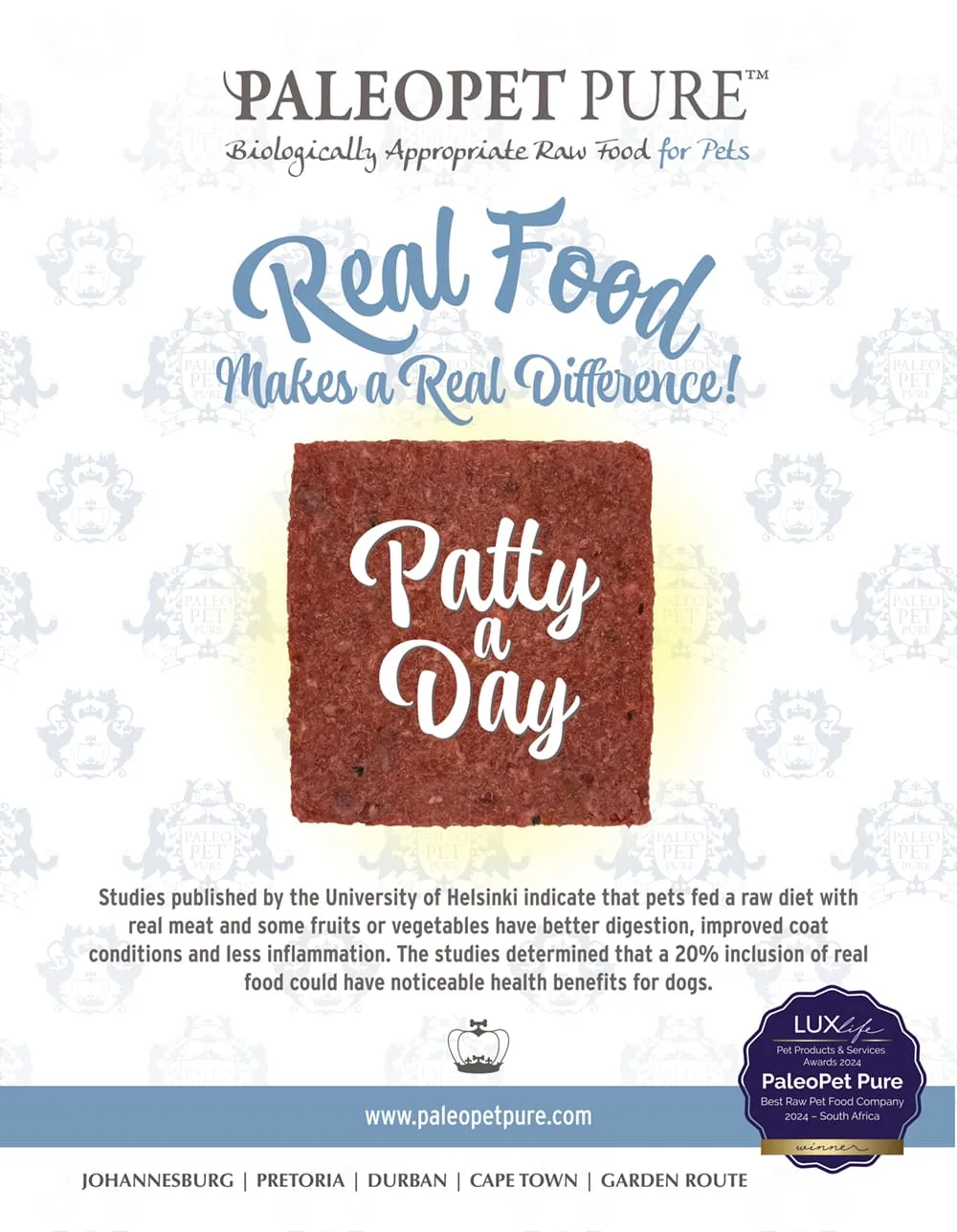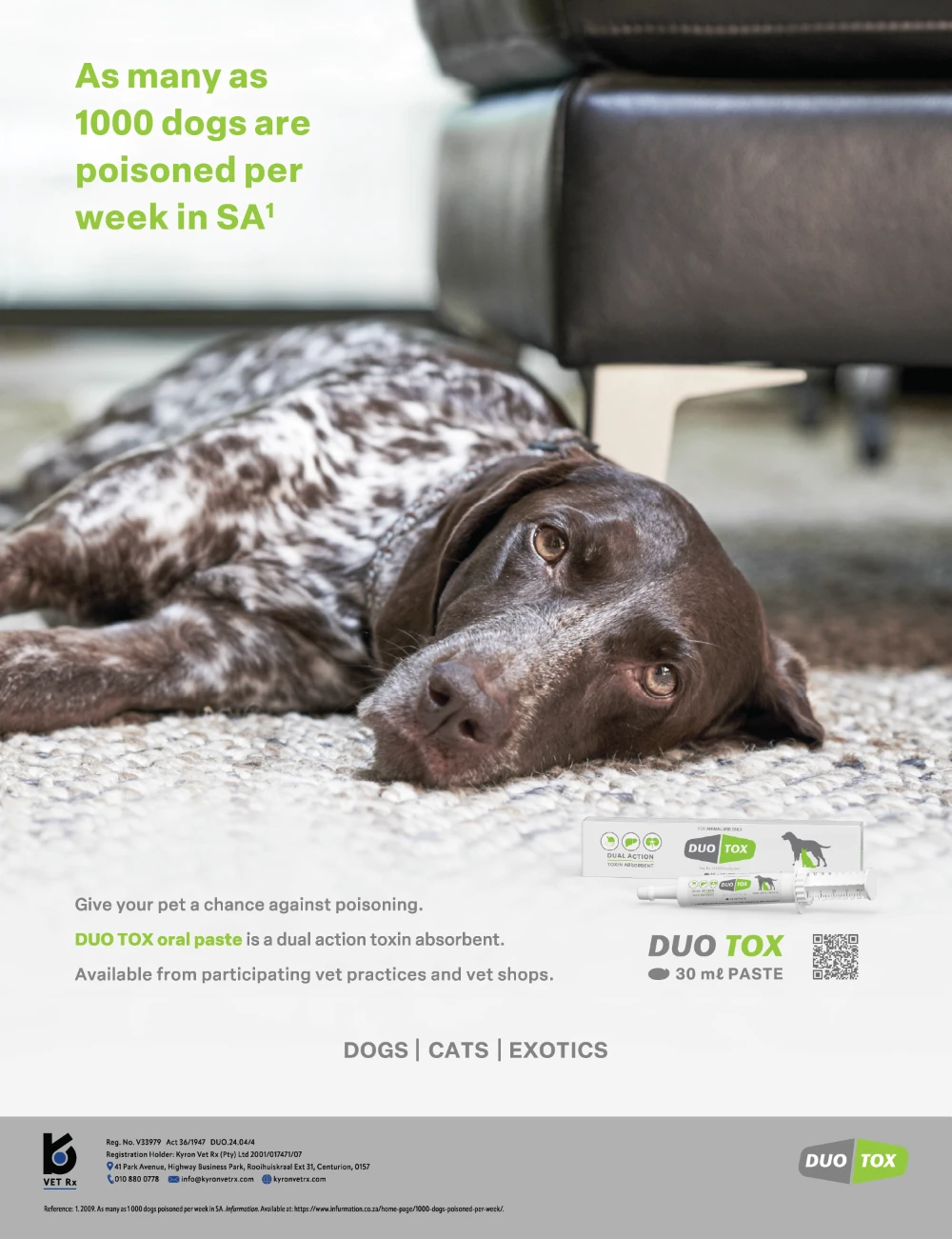SOUTH AFRICA'S PREMIER DOG MAGAZINE
DIGITAL ISSUE 14A | 2025

Welcome to DQ Issue 14A!
This issue is packed with content designed to make your life with dogs healthier, happier, and more informed. From uncovering the real cost of owning a dog in 2025 to exploring the gut-brain connection and how it shapes behaviour, we’ve delved deep into the science that matters for owners.
For the active and adventurous, our Agility 101 Guide highlights the many different paths into this exciting sport, proving there’s a class for every kind of dog – from high-speed collies to more laid-back companions. And in our Intriguing Ingredients series, we’re spotlighting blueberries – are they really a superfood for dogs, or is it all just hype?
Practical care is also at the heart of this edition. We look at how slow feeders can improve digestion and wellbeing, plus we tackle your reader questions on joint health and behaviour challenges.
As always, thank you for reading and for being part of our DQ community!
Lizzie and
the DQ team xxx
Dr Lizzie Harrison | Editor
Designer | Mauray Wolff
DIGITAL ISSUE 14A | 2025
CONTENTS
The cost of dogs in 2025
The South Africa Edition
Agility 101
Exploring the different types of dog agility classes
The science of longevity
Helping dogs live longer, healthier lives
The gut–brain connection in dogs
How gut health shapes behaviour, anxiety, and learning
Slow down
The benefits of slow feeders for dogs
Intriguing ingredients
Blueberries
Ask DQ
Your questions answered
Products we love
Shopping
The
COST OF A DOG
in 2025
The South Africa Edition
Bringing a dog into your life is an incredible adventure, but one that comes with real financial commitments. Whether you’re adopting a rescue or bringing home a pedigree pup, it’s important to know what you’ll be spending, not just in the first year but throughout their life. From food to vet visits, insurance to toys, costs can add up quickly. Here’s a breakdown of what South African pet owners can realistically expect in 2025.

FIRST-YEAR EXPENSES: THE BIG INVESTMENT
Starting out with a new puppy brings a bundle of costs, not just the adoption fee! For example, typical first-year veterinary expenses like vaccinations (R3,000), routine check-ups, and parasite control amount to around R6,000 to R10,000. But be prepared, as without insurance, emergency treatments for serious illness or injury can easily add R15,000 to R25,000 in a single year.

WHAT THE AVERAGE DOG OWNER SPENDS MONTHLY
Here’s what pet parents in SA typically budget for in a month:
- Food: From mainstream kibble to prescription diets, expect about R450–R1,800+, depending on size and quality.
- Vet check-ups: Routine visits including vaccines average R1200 per year, or roughly R100/month.
- Worming, flea and tick control: These preventive medications cost between R100–R800 per treatment, depending on your dog’s size and the products used.
- Pet insurance: Impromptu medical expenses can be high, and while only 1% of SA dogs are insured, it's an option worth exploring. Basic cover plans start at around R190/month, rising to about R1800/month for extensive protection.
- Toys and supplies: Budget R250+ per month for treats, toys, leads, and hygiene supplies.
Estimated monthly total: R600–R3,000, with costs varying by pet size, health, and care level.

EMERGENCY AND UNEXPECTED COSTS
Illnesses and accidents are when bills can skyrocket. Vet care for emergencies, surgeries, or serious injuries can range from R15,000 to R40,000+, depending on complexity.
LIFE STAGE MATTERS
It’s worth remembering that puppies and senior dogs are often more expensive than healthy adults.
• Puppies need extra veterinary care in the first year, including multiple vaccinations, parasite treatments, and sterilisation. Plus, new owners have to pay all the one-off costs like bowls, bedding, leads, and training classes.
• Senior dogs may need more frequent vet visits, prescription diets, supplements for joints, or long-term medication for chronic illnesses like arthritis, diabetes, or heart disease.
Adult dogs in their prime are generally less expensive to maintain, but emergencies can happen at any age. Factoring life stage into your budget will help you plan more realistically for the full journey, but know that every dog’s trajectory is different.
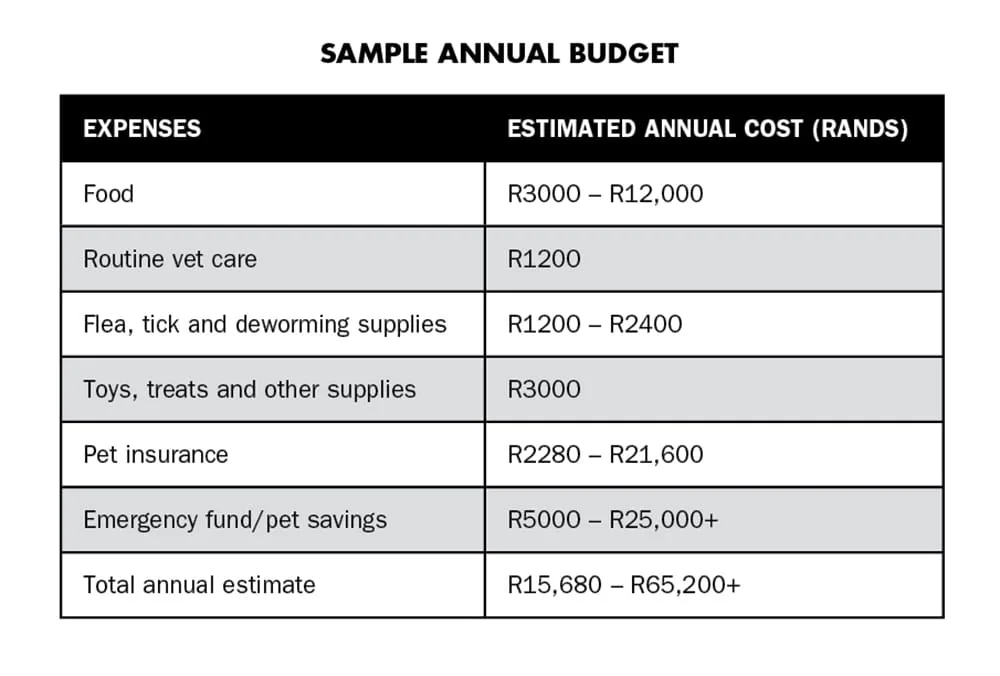
EXAMPLES FROM DOG OWNERS
Over on Reddit, South African pet owners shared their budgets:
• One owner with a Jack Russell tallied R1,500/month, mostly for food and vet visits.
• Another noted R1,000 on food, R500 on insurance, plus R100–R200 for toys and treats per month.
LIFETIME COST SNAPSHOT
A dog's full lifetime cost isn't trivial. International metrics estimate a decade of canine companionship can cost anywhere from R54,000 – R650,000.

FINAL THOUGHTS
Owning a dog is one of life’s greatest joys, but it comes with financial responsibility. By planning ahead, budgeting realistically, and considering pet insurance or a savings buffer, you’ll be better prepared to give your dog the best life possible – without financial stress.

AGILITY 101
Exploring the different types of dog agility classes
If you’ve ever watched a Border Collie blaze through a tunnel, sail over jumps, and whip around weave poles like a pro, you’ll know how exciting dog agility can be. But did you know that agility isn't just for elite competitors? There are many types of agility classes designed to suit every dog, from beginners to seasoned speedsters, and every handler, too.
Whether you're looking to compete, bond with your dog, or simply try something new, there’s a class to match. Here’s a guide to the main types of dog agility classes you’ll find in South Africa and around the world.

CORE AGILITY FORMATS
1. Foundation agility classes
Best for: Puppies or dogs new to agility
Focus: Confidence, basic handling, fun
These beginner-friendly classes don’t involve full-height equipment or timed runs. Instead, they focus on building your dog’s confidence, introducing basic cues, and teaching handling skills like turns, targeting, and attention. It’s a great starting point to prepare for future agility while ensuring your dog’s body and mind are ready.
TOP TIP
Many instructors offer 'Puppy Agility' or 'Pre-Agility' courses for dogs as young as four to six months, using safe, low-impact obstacles.

2. RECREATIONAL AGILITY (JUST FOR FUN!)
Best for: Dogs of all breeds and ages
Focus: Fitness, mental stimulation, teamwork
Not all agility classes are competition-focused. Recreational agility offers the fun without the pressure. You and your dog can enjoy navigating courses together in a relaxed environment. It’s ideal for owners who want enrichment, bonding, and exercise without worrying about scores or rules.
BONUS
Recreational agility is a great way to improve your dog’s off-lead control, focus, and recall in a safe, fenced space.
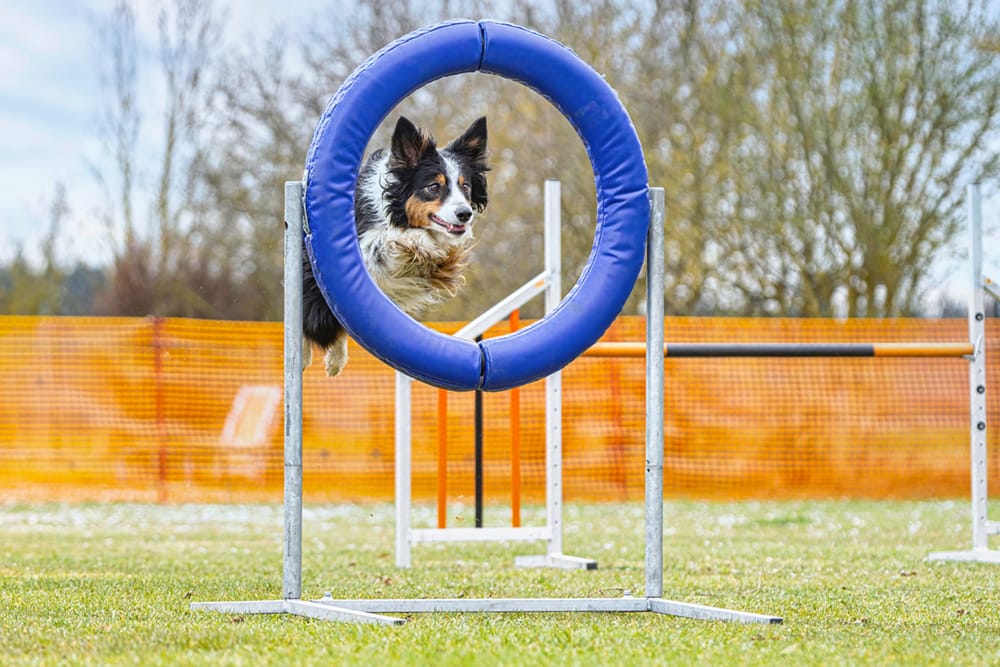
3. COMPETITIVE AGILITY
Best for: Teams aiming for competition
Focus: Speed, precision, and teamwork under pressure
These classes prepare you and your dog for official agility competitions, such as those run under KUSA (Kennel Union of Southern Africa) or Fédération Cynologique Internationale (FCI) rules. You’ll learn how to handle sequences, read course maps, and improve obstacle performance under time constraints.
Dogs progress through grades or levels, often starting in ‘Grade 1’ or ‘Starters’ and advancing through clear rounds or titles.
In competitive agility, you’ll train on regulation equipment and work on speed, accuracy, and strategy.

4. STEEPLECHASE
Best for: Dogs who love to run
Focus: Fast-paced courses with minimal technical handling
Steeplechase (or Jumpers with Weaves) is a fast and flowing form of agility that excludes more technical obstacles like the seesaw or A-frame. It typically includes jumps, tunnels, and weave poles. The emphasis is on speed and smooth handling, making it a favourite for energetic dogs and confident handlers.
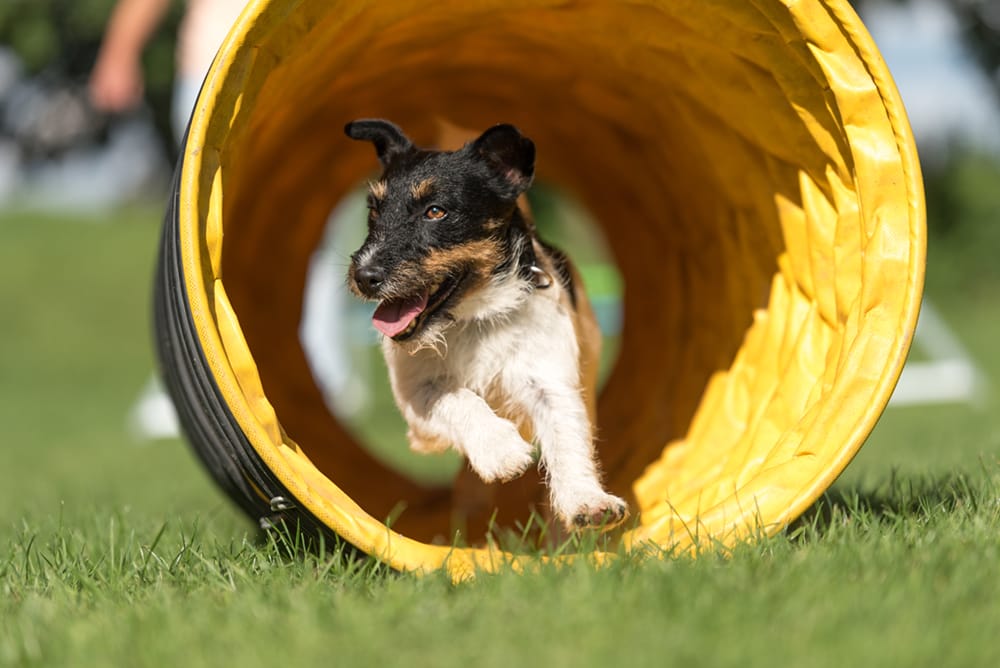
5. HOOPERS AGILITY
Best for: Older dogs, large breeds, or those with joint issues
Focus: Low-impact agility using hoops and barrels
Hoopers is growing in popularity for its inclusivity. The courses are flowing and low-impact, with obstacles like ground-level hoops, tunnels, and barrels. It’s suitable for dogs who may not be able to handle high jumps or tight turns, but who still love to run and learn. Handlers often work at a distance, so it’s great for developing communication and focus.
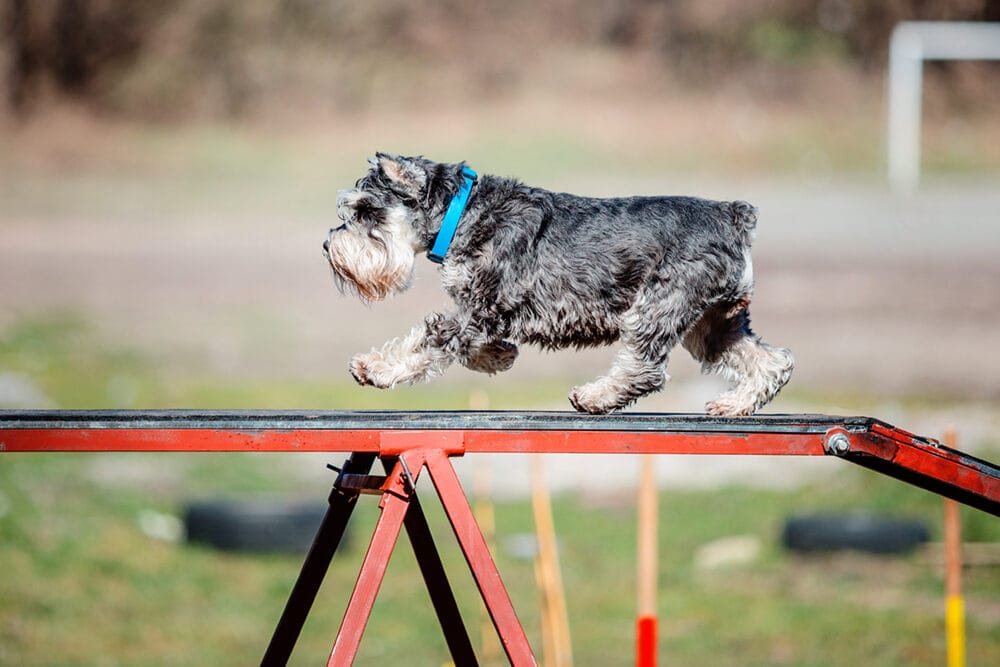
6. SPECIALIST OR BREED-SPECIFIC AGILITY
Best for: Breed clubs or niche groups
Focus: Tailored challenges for specific groups
Some clubs offer agility for certain breed types or sizes, like Small Dog Agility, Senior Dog Classes, or Rescue Dog Agility. These are often community-focused, encouraging participation without rigid rules. They help make the sport accessible and welcoming to a broader range of dogs.
GAMES BASED AGILITY
In competitive dog agility, particularly under organisations like KUSA, UKI, USDAA, and AAC, the sport isn't limited to standard ‘agility’ or ‘jumpers’ classes. There are a variety of speciality games-based classes like Gamblers, Snooker, Time to Beat, and others, each with its own set of rules and strategies. These are often used in championship-level events or offered as standalone challenges.
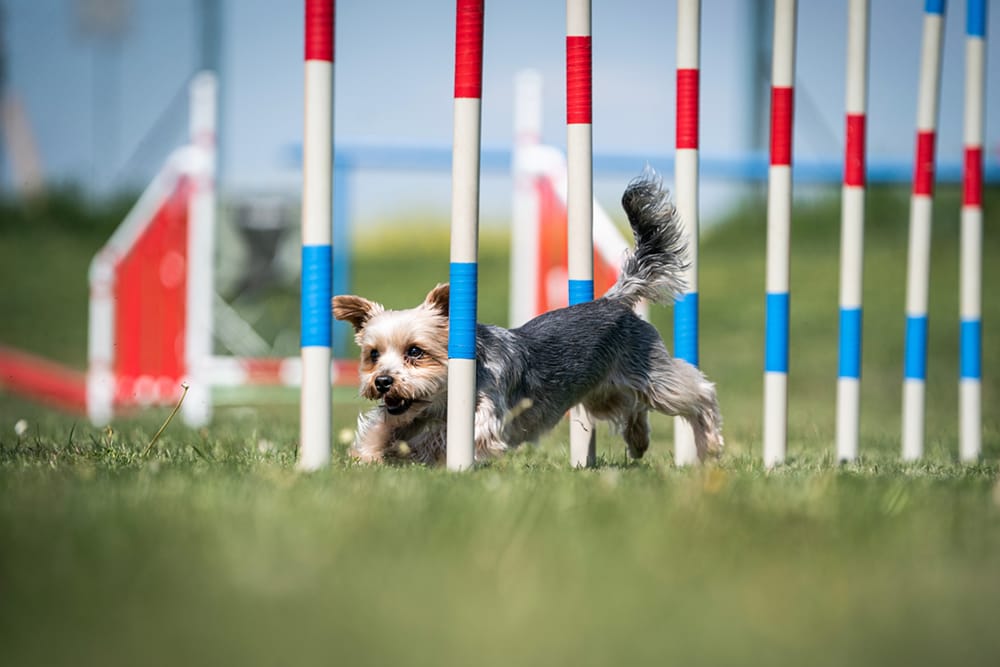
Here are some of the more common types:
1. GAMBLERS
Goal: Complete a course of your own design in the opening time, then attempt a bonus ‘gamble’ (a distance-handling challenge) for extra points.
Handlers collect as many points as possible by choosing their own obstacles in the first part of the course (each obstacle has a point value). Then, within a buzzered timeframe, they must complete a designated ‘gamble’ sequence, usually requiring the dog to work independently at a distance.
Gamblers is great for dogs with strong focus and confident distance skills.
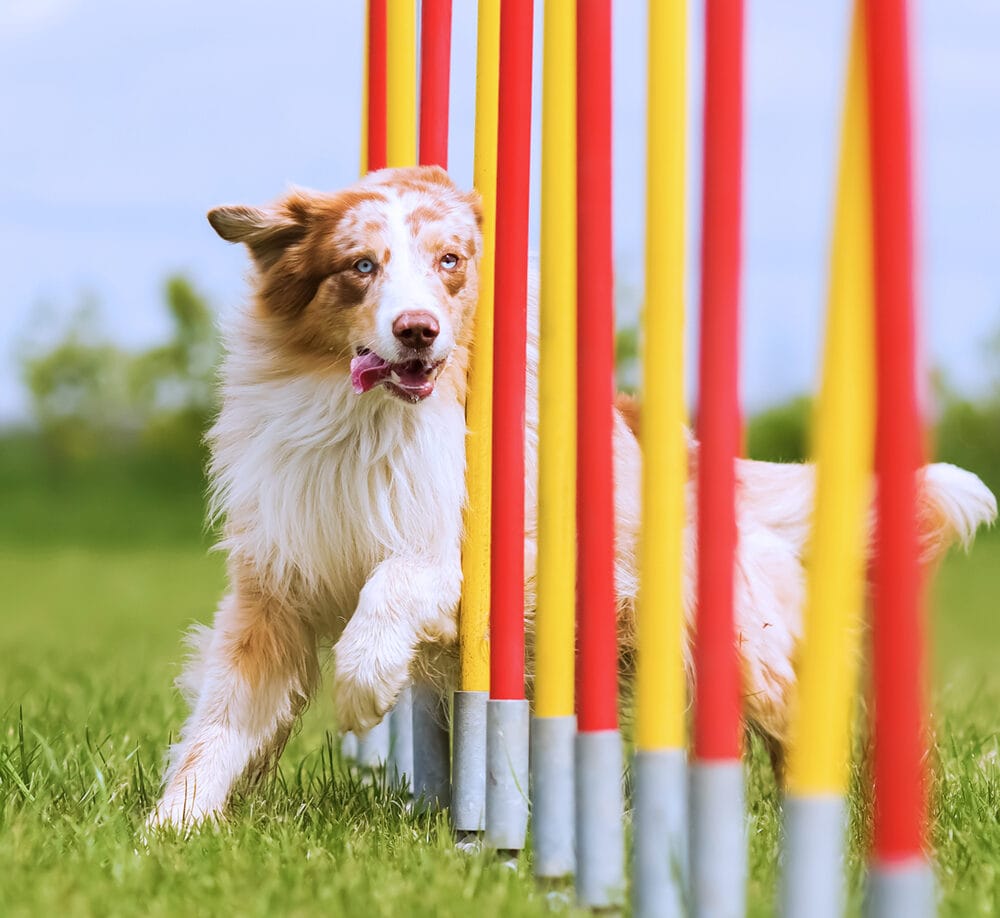
2. SNOOKER
Goal: Follow a strict pattern of obstacles based on snooker rules, collecting maximum points before time runs out.
Snooker is a thinking game! Dogs must alternate between red jumps (worth points) and coloured obstacles (worth increasing point values), following a sequence determined by the handler, then complete a closing sequence. It’s all about planning, control, and knowing your dog’s strengths.
Snooker is great for strategic handlers and dogs who love mental challenges.
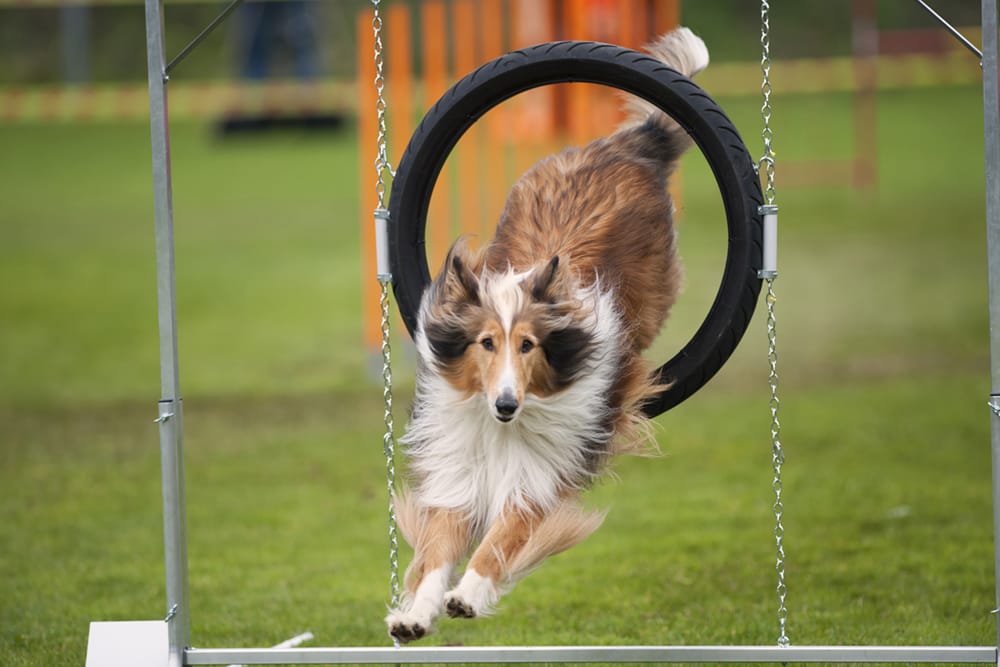
3. TIME TO BEAT (T2B)
Goal: Beat the set time on a flowing course, without faults.
Each dog runs a pre-set course, and the fastest clean round sets the time to beat. Dogs that complete the course without errors and within that time qualify. It combines speed and precision and is popular as a ‘starter’ class at competitions.
Great for newer teams or those who want a balance of speed and accuracy.
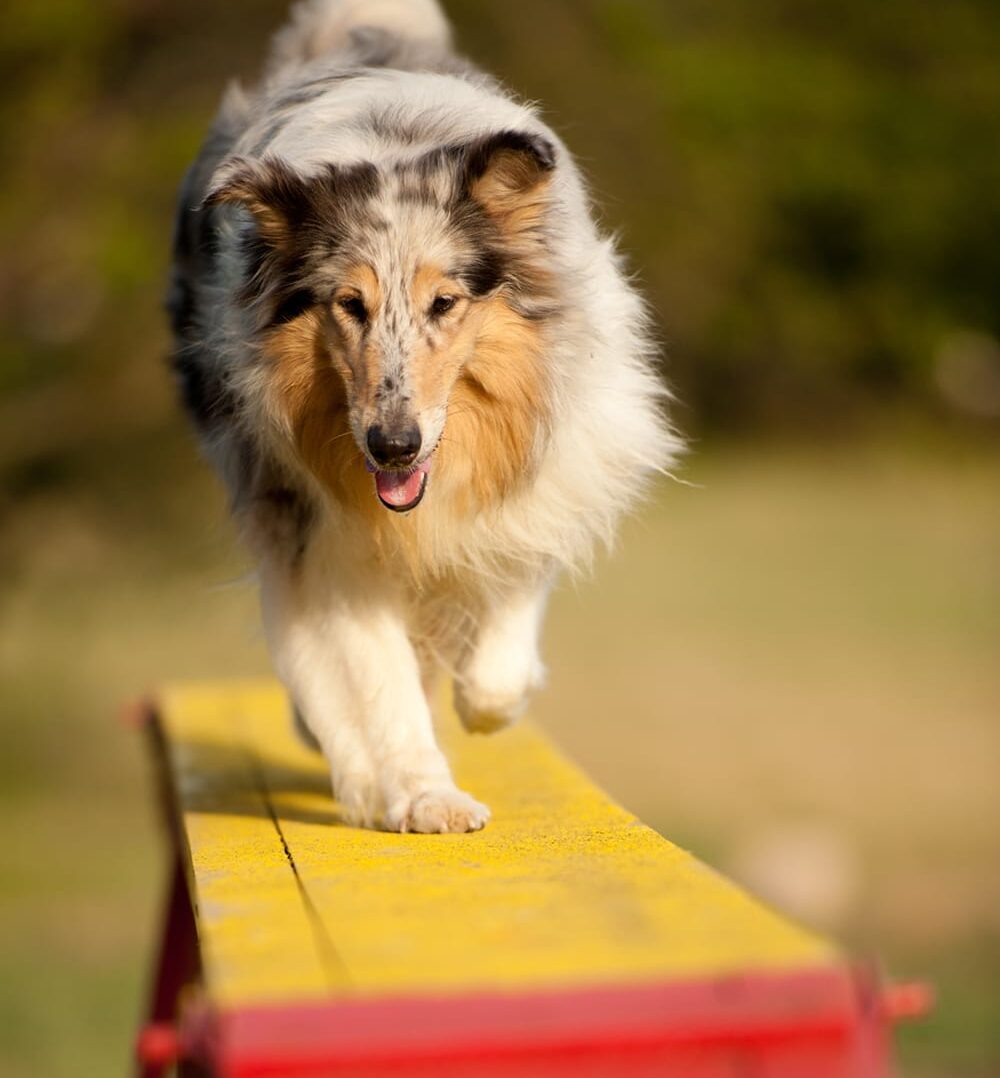
4. PAIRS OR TEAM RELAY
Goal: Complete an agility course as part of a two- or three-dog team.
Each dog completes a portion of the course before the next team member continues. These classes are exciting and full of cheering handlers!
Relays are great for sociable dogs, camaraderie, and working under pressure.
5. OTHER LOCAL VARIATIONS
Depending on the venue or organisation, you may also encounter:
- Power and speed: A course split into two sections (one for accuracy, one for speed).
- Agility stakes: A combined score event used in championship qualifiers.
- Knockout or elimination rounds: Fastest team wins in a head-to-head format.
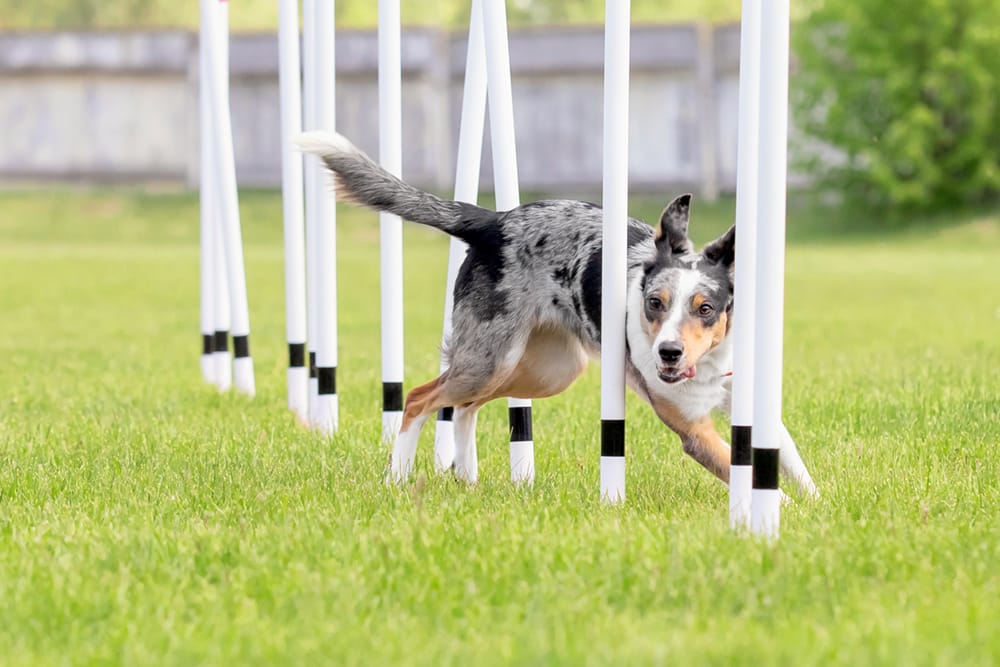
HOW TO GET STARTED
Agility is open to all breeds and crossbreeds, as long as your dog is healthy, motivated, and enjoys learning. Look for clubs or instructors in your area who use positive reinforcement training, offer safe and age-appropriate classes, and can guide you at your own pace.
What to bring to your first class:
- A well-fitted harness or collar
- High-value treats or a toy
- Water and a bowl
- A can-do attitude!

FINAL THOUGHTS
Agility is about more than jumps and tunnels, it’s about trust, teamwork, and having fun with your best friend. Whether you want to compete or simply add some variety to your dog’s routine, there’s an agility class out there for you and your dog.
Find a KUSA-accredited club or instructor near you at www.kusa.co.za, or search local Facebook groups for agility enthusiasts in your region.
The science of
longevity
Helping dogs live longer, healthier lives
Every dog owner wishes for more time with their four-legged friend - more walks, more cuddles, more years of shared adventures. While we can’t stop the clock, we can slow its effects by making smart, evidence-based choices about our dogs’ health and lifestyle.
Longevity isn’t about a quick fix; it’s about a lifetime of consistent care. From genetics and nutrition to exercise, veterinary care, and mental wellbeing, each choice we make can help our dogs not just live longer, but thrive.

GENETICS AND BREED
A dog’s breed and size are two of the strongest indicators of lifespan. Smaller breeds, such as Chihuahuas and Toy Poodles, often live into their mid-to-late teens, while giant breeds like Great Danes and Irish Wolfhounds tend to have much shorter lifespans. This is mainly believed to be due to differences in growth rates, metabolism, and how quickly the different breeds’ bodies age.
Beyond size, it has also been noted that mixed-breed dogs often live longer than purebreds, likely due to greater genetic diversity and reduced risk of certain inherited conditions. That said, responsible breeding in purebred dogs can also help improve longevity by prioritising health and genetic soundness over appearance alone.
While you can’t change your dog’s genetic makeup, knowing their breed’s potential lifespan and common health risks helps you make informed decisions about prevention and care.
FIVE HABITS OF DOGS WHO LIVE PAST 15
1. Eat a balanced diet and maintain a healthy weight.
2. Get daily, age-appropriate exercise.
3. Have regular vet check-ups, including dental care.
4. Enjoy mental stimulation and enrichment.
5. Receive tailored care as they age.

NUTRITION
Nutrition plays a central role in extending your dog’s healthy years. A balanced, species-appropriate diet provides the nutrients needed for strong immunity, healthy joints, and good energy levels.
A large part of this is appropriate feeding for the different life stages. Puppies need diets to support their growth, but equally must not be overloaded with calories too soon. Adult dogs benefit from balanced energy intake to prevent obesity, one of the biggest lifespan-reducing factors. Senior dogs often need adjustments in protein, fat, and fibre, depending on their health status.
Portion control is equally important. Overfeeding leads to obesity, which is linked to diabetes, arthritis, heart disease, and a shorter lifespan. Studies have shown that dogs fed a slightly reduced-calorie diet can live significantly longer and develop age-related diseases later.
Some owners explore alternative diets, such as plant-based feeding. These can work for dogs when carefully formulated to meet all nutritional requirements, but they should always be designed with veterinary or canine nutritionist guidance to avoid deficiencies.

PHYSICAL ACTIVITY
Regular exercise is as important for dogs as it is for humans. It helps maintain muscle mass, supports healthy joints, aids digestion, and reduces the risk of obesity.
For young and active dogs, daily walks, runs, or play sessions are essential for both physical and mental well-being. For older dogs or those with mobility issues, gentler options such as swimming, short walks, or canine physiotherapy can keep them active without strain.
Even in senior years, movement is medicine; keeping your dog active supports circulation, maintains flexibility, and lifts their mood.
VETERINARY CARE AND PREVENTATIVE HEALTH CARE
Routine veterinary care is a cornerstone of longevity. Annual or biannual check-ups can catch problems early, before they become serious.
Blood tests, especially as your dog ages, can be valuable in detecting early signs of kidney or liver disease, hormonal imbalances, and other health issues that may not yet be visible externally. Early intervention can dramatically improve outcomes, so regular blood tests and check-ups are critical.
Prevention is always better than cure, and preventive measures such as vaccinations, parasite control, and regular dental cleaning all contribute to a longer, healthier life.
DENTAL CARE
Dental health in particular is often overlooked when considering longevity, yet gum disease can lead to infections that affect the heart, liver, and kidneys. Brushing your dog’s teeth regularly and arranging professional cleanings can add years to their life.

ENVIRONMENTAL ENRICHMENT AND MENTAL HEALTH
Longevity isn’t just about the body; it’s also about the mind. Mentally stimulated dogs are happier, more resilient, and often healthier overall. Boredom and stress can lead to behavioural problems, anxiety, and even physical health decline.
Enrichment can be as simple as rotating toys, teaching new tricks, introducing scent games, or taking your dog to new environments. Training sessions, puzzle feeders, and interactive play all help keep your dog’s brain sharp.
Social interaction is also vital. Dogs are social animals and thrive on companionship, whether with their human family, other dogs, or both.

EMERGING SCIENCE AND LONGEVITY RESEARCH
Researchers are actively studying ways to extend canine lifespan through advanced science. Trials are underway exploring medications and supplements that may slow ageing at a cellular level, such as drugs that mimic the benefits of calorie restriction.
While these breakthroughs are exciting, most experts agree that the biggest gains in longevity will continue to come from the basics: balanced nutrition, regular exercise, preventive healthcare, and a stimulating, low-stress lifestyle.

RED FLAGS IN SENIOR DOGS
• Reduced appetite or sudden weight change.
• Lethargy or reluctance to move.
• Persistent coughing or difficulty breathing.
• Unexplained lumps or bumps.
• Bad breath or dental pain.
• Confusion, disorientation, or changes in behaviour.
CONCLUSION
There’s no single secret to helping your dog live longer. Instead, it’s the sum of many small, consistent choices over a lifetime. By focusing on good nutrition, keeping your dog active, ensuring regular veterinary care, and nurturing their mental wellbeing, you can give them the best chance at a long, happy, and healthy life.
The cutting-edge of canine longevity
Research is pushing the boundaries of what we might do for our dogs to give them healthier, longer lives. Here are some of the main research areas currently under investigation:
1. ANTI-AGEING PHARMACEUTICALS
- The Dog Ageing Project is running large-scale rapamycin trials to test whether this drug, known to extend lifespan in mice, can improve longevity, cognition, and heart health in pet dogs.
- Biotech startup Loyal is developing LOY002, a daily anti-ageing pill targeting metabolic health in senior dogs (10 years+), with FDA backing for “reasonable expectation of efficacy.” Trials are underway with over 1,000 dogs enrolled.

2. BIG DATA AND LONGITUDINAL STUDIES
- The Dog Ageing Project continues to gather massive amounts of real-life, long-term data on tens of thousands of privately-owned dogs. The project tracks how lifestyle, genetics, environment, and demographics relate to ageing trajectories.

3. GENETICS AND EPIGENETIC BIOMARKERS OF AGEING
- Researchers are mapping how DNA methylation (epigenetic changes) and oxidative stress markers predict ageing in dogs. They are finding more damage to DNA in large breeds with shorter lifespans, versus smaller breeds.
- Early science from other animal models explores noncoding RNAs (ncRNAs) as key drivers of extended lifespan, illuminating foundational mechanisms of ageing.
4. GENE THERAPY AND TRANSLATIONAL RESEARCH
- Genetic research inspired by the Church lab’s work, such as viral-vector gene therapies to counter multiple age-related diseases, has spurred ventures like Rejuvenate Bio, aiming to apply age-reversal strategies in dogs. These translational aging interventions might allow ‘problematic’ genes to be replaced or ‘switched off.’

5. NEW DIGITAL AND PHYSIOLOGICAL BIOMARKERS
- Scientists are exploring advanced markers of welfare and ageing beyond cortisol, including heart rate variability and oxidative stress profiling, to gauge canine ageing and wellbeing more accurately. These would offer smarter, non-invasive ways to track ageing and quality of life.
These avenues signal a rapidly evolving field, where veterinary science, biotech, and wellness practices converge with the goal of giving dogs not just longer lives, but healthier, fuller ones.
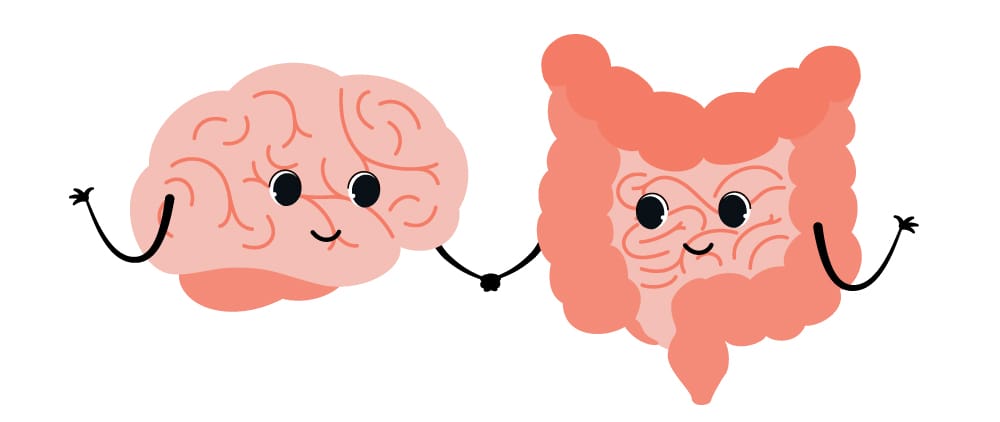
THE GUT-BRAIN CONNECTION IN DOGS
The gut-brain connection in dogs – and how food influences emotion, focus, and resilience
If you’ve lived with a dog who gets jumpy during storms, struggles with separation, or turns into a genius (or gremlin!) at training class, you’ve seen how tightly the body and mind intertwine. Over the last decade, science has shown that one surprising meeting point is the gut–brain axis (GBA): a two-way communication network linking the gastrointestinal tract to the central nervous system via nerves (notably the vagus nerve), immune pathways, hormones, and microbial metabolites. In humans and laboratory animals, the microbiome can influence mood, stress responses, and cognition. In dogs, the picture is newer, but it’s getting clearer.
Below, we translate the latest findings into everyday decisions you can make at the food bowl (and beyond) to help anxious dogs cope better, support learning, and keep behaviour on an even keel.

WHAT THE SCIENCE SAYS (SO FAR)
1. THE CANINE MICROBIOME IS LINKED TO BEHAVIOUR
A 2025 study in Scientific Reports used machine-learning models to predict behavioural group (e.g., anxiety, aggression) from dogs’ gut microbiota. While overall differences were subtle, certain bacterial signatures - especially Blautia - were consistently associated with anxiety profiles. This doesn’t prove cause and effect, but it strengthens the link between microbiome composition and behaviour in pet dogs.
In parallel, reviews summarising canine and translational data argue that microbial activity can modulate stress circuits, suggesting therapeutic potential for ‘psychobiotic’ strategies in dogs - though the field is young and needs more controlled trials.
2. STRESS CAN RESHAPE THE GUT
Short, acute stressors that are common in pet life (travel, novel environments, social stress) can shift gut communities and digestive health in dogs. This aligns with human and rodent work showing bidirectional stress-microbiome effects and helps explain why anxious periods sometimes coincide with tummy troubles, or vice versa.
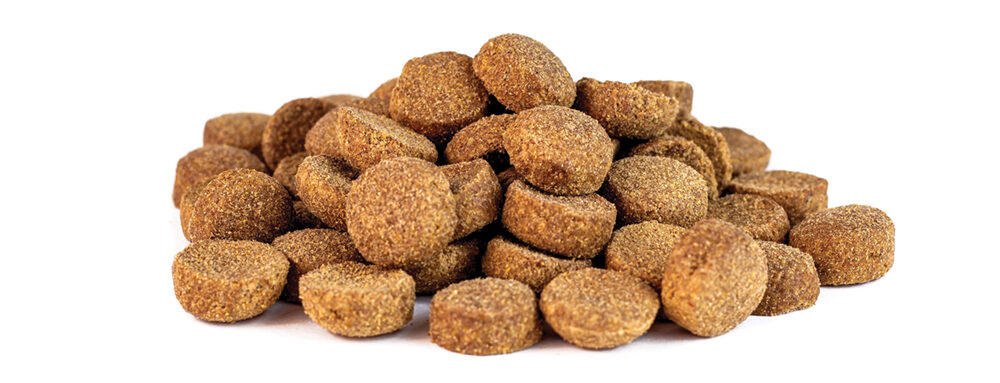
3. MICROBES AND COGNITION
Emerging work has linked specific microbes (for example, Bifidobacterium pseudolongum) with better memory performance in puppies, hinting that gut residents could influence learning windows. We’re only at an early stage in the research process, but the findings do dovetail with broader evidence that microbial metabolites (like short-chain fatty acids) can affect neuroplasticity and inflammation, two pillars of learning.
FMT in dogs stands for Faecal Microbiota Transplantation, a procedure where faecal matter from a healthy donor is transferred to a sick dog to restore a healthy gut microbiome. This treatment aims to address imbalances in the dog's gut bacteria, which can be caused by various factors like disease, infection, or prolonged antibiotic use.

4. CHANGING THE MICROBIOME CAN CHANGE BEHAVIOUR
In a 2024 pilot study in a canine model of drug-resistant epilepsy, faecal microbiota transplantation (FMT) not only modulated seizures but reduced anxiety/ADHD-like symptoms. This provided a striking, if small-sample, demonstration that targeted microbiome interventions can affect brain-behaviour outcomes. Academic and lay summaries echoed the finding, with appropriate caution about scale and replication.

HOW THE GUT 'TALKS' TO THE BRAIN
- Neural routes: Microbial metabolites (e.g., butyrate) and gut hormones can stimulate the vagus nerve, influencing brain regions involved in stress and mood.
- Immune routes: Dysbiosis (an imbalanced microbiome) can increase gut permeability and cause low-grade inflammation, which in turn can alter behaviour and cognition.
- Endocrine routes: Microbes affect stress-axis signalling (HPA axis), tuning how dogs respond to fear or novelty.

PRACTICAL FEEDING STRATEGIES TO SUPPORT BEHAVIOUR, ANXIETY AND LEARNING
The goal isn’t to chase a single ‘magic’ supplement. It’s to build a resilient, diverse microbiome with everyday choices and then layer targeted tools (pre/pro/post-biotics) when they make sense for your dog.
1. START WITH THE FOUNDATION: COMPLETE, BALANCED NUTRITION AND WEIGHT CONTROL
A well-formulated diet provides the amino acids, essential fats, vitamins, and minerals needed for neurotransmitters, myelin, and immune regulation, all elements influencing behaviour. Keep body condition lean: excess fat tissue (adiposity) raises inflammatory tone, which can worsen anxiety and impair learning. Reviews in dogs and cats consistently connect microbiome stability with appropriate, balanced feeding.
How to apply:
• Feed a complete diet from a reputable brand or a qualified nutritionist-formulated home-prepared plan.
• Monitor body condition score monthly and adjust portions early in response to changes.
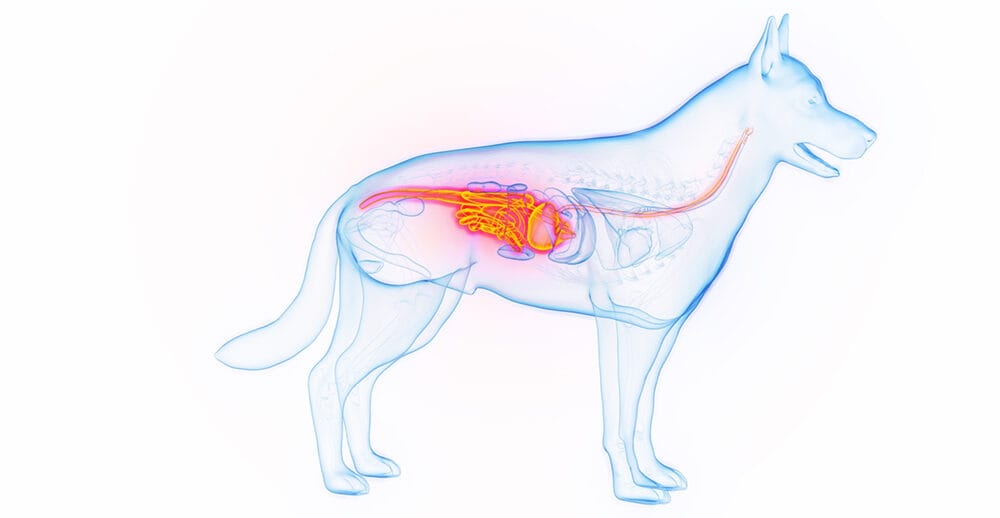
2. FEED THE MICROBIOME WITH PREBIOTIC FIBRES
Prebiotics (non-digestible fibres such as FOS, MOS, inulin, and certain resistant starches) selectively feed beneficial microbes, encouraging production of short-chain fatty acids (SCFAs) that support gut barrier integrity and may calm neuro-inflammation. In dogs, prebiotics improve stool quality and can stabilise communities disrupted by stress or diet shifts.
How to apply:
• Look for complete diets or supplements listing FOS/inulin/MOS.
• Introduce slowly over seven to ten days to avoid gas/loose stools.

3. CONSIDER PROBIOTICS, BUT THINK STRAIN, DOSE AND PURPOSE
Probiotic effects are strain-specific. Reviews cataloguing canine-derived strains show benefits for gut health; early evidence (largely translational) suggests some strains may reduce anxiety-like behaviours via immune and vagal pathways. Veterinary institutions now discuss mental-health benefits as a promising frontier.
How to apply:
• Choose products with named strains (e.g., Lactobacillus rhamnosus, Bifidobacterium longum) and Colony Forming Unit (CFU) counts at end of shelf-life.
• Use for four to eight weeks before judging the impact. It is advised to keep a simple behaviour log (restlessness, reactivity, settle time) during this time.
• Chat to your vet before adding probiotics if your dog is immunocompromised or on medication.
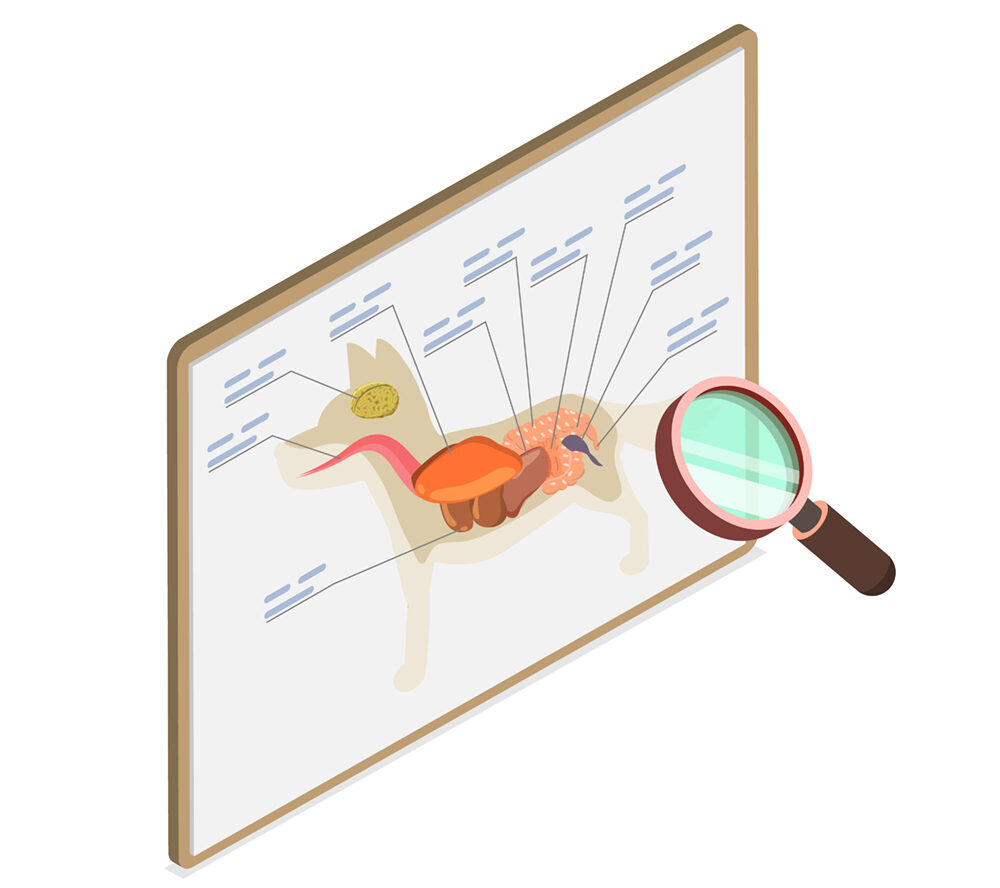
4. DON'T FORGET POSTBIOTICS AND FERMENTED FOODS (WITH CARE)
Postbiotics (beneficial microbial metabolites) are gaining traction in pet nutrition. While canine-specific behavioural data are sparse, postbiotic-enriched diets may deliver short-chain fatty acids (SCFAs) and microbial cell components that modulate immune tone. Fermented additions (plain kefir/yoghurt) can be helpful for some dogs, but lactose sensitivity and added sugars need to be avoided so ask your vet before you experiment.
5. USE ELIMINATION AND SIMPLIFICATION STRATEGICALLY
For dogs with chronic gastrointestinal upsets and behaviour changes, a limited-ingredient or hydrolysed diet trial can reduce immune ‘noise’ from food reactions, sometimes improving restfulness and trainability. While this is clinical common sense rather than gut-brain-axis-specific proof, it fits the principle: reduce gut inflammation to help the brain.

6. WHEN TO THINK ABOUT FMT
Given early data in epileptic dogs with behavioural comorbidities, FMT is an intriguing vet-led option in highly selected cases (e.g., refractory GI disease with behavioural overlay, or specific neurological comorbidities). It remains experimental in general practice with protocols, donor screening, and long-term outcomes still needing standardisation. For more information, we advise you chat to your vet or specialist centre.
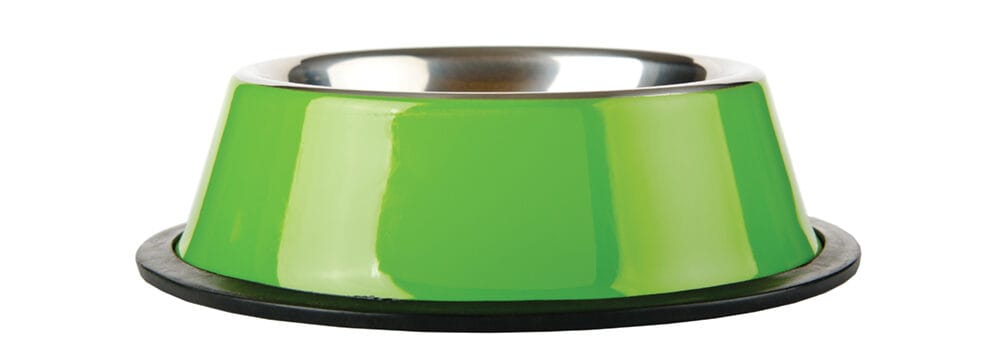
BEYOND THE BOWL: LIFESTYLE STEPS THAT HELP THE GUT AND MIND
1. TRAIN THE STRESS SYSTEM
Because acute stress can nudge the microbiome off balance, predictable routines, choice-based handling, and gradual desensitisation (to alone-time, travel, visitors, storms) do double duty: they reduce behavioural flare-ups and protect gut stability.
Try:
• Daily ‘decompression’ sniff-walks
• Five to ten minutes of easy trick training for positive prediction error (dog learns ‘I can cope and win’)
• A quiet, scent-enriched rest space (lick mats, stuffed toys, chew items)
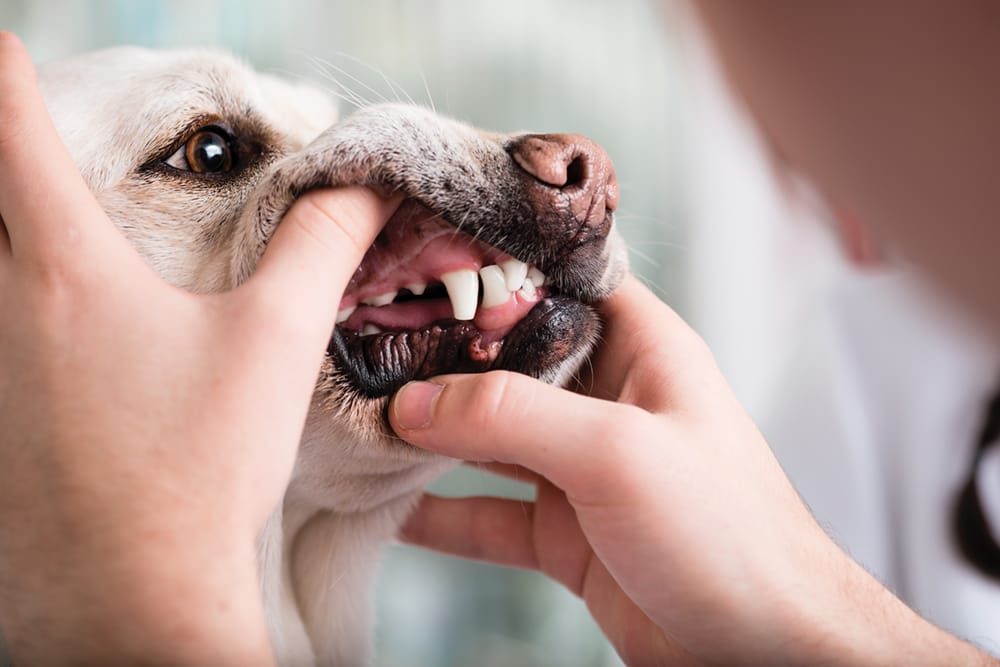
2. MOVE THE BODY, FEED THE BRAIN
Exercise modulates the microbiome and supports neuroplasticity. Gentle aerobic work (brisk walks, controlled play, swimming) plus short shaping sessions can improve sleep quality and stress resilience, both crucial for anxious dogs and for learners. It is worth noting that exercise-microbiome interactions in dogs continue to be explored with broader longevity work suggesting parallel benefits.
3. DENTAL AND GI HEALTH ARE PART OF BEHAVIOURAL HEALTH
Oral pain and chronic gut irritation elevate inflammatory mediators and stress hormones. Routine dental care and timely treatment of GI disease indirectly support calmer behaviour and better focus. This point is being increasingly emphasised in veterinary communications on the gut-brain-axis connection.
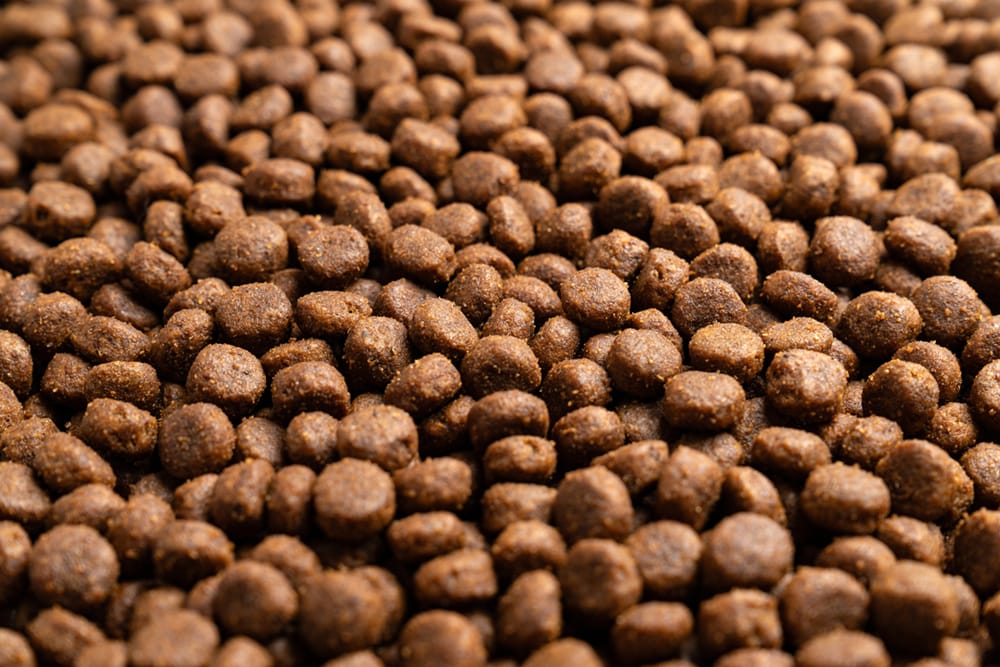
PUTTING IT TOGETHER: A FOUR-WEEK STARTER PLAN
WEEK 1: STABILISE AND LOG
• Keep current complete diet; add a behaviour and stool diary (rate: anxiety 0–5, settle time, stool consistency).
• Introduce a predictable daily rhythm (feeding, walks, decompression).
• Begin five minutes/day of low-frustration training (hand-target, mat settle).
WEEK 2: FEED THE MICROBIOME
• Add a prebiotic fibre (FOS/inulin) at a low dose and increase gradually.
• Introduce a named-strain probiotic product for approximately six to eight weeks.
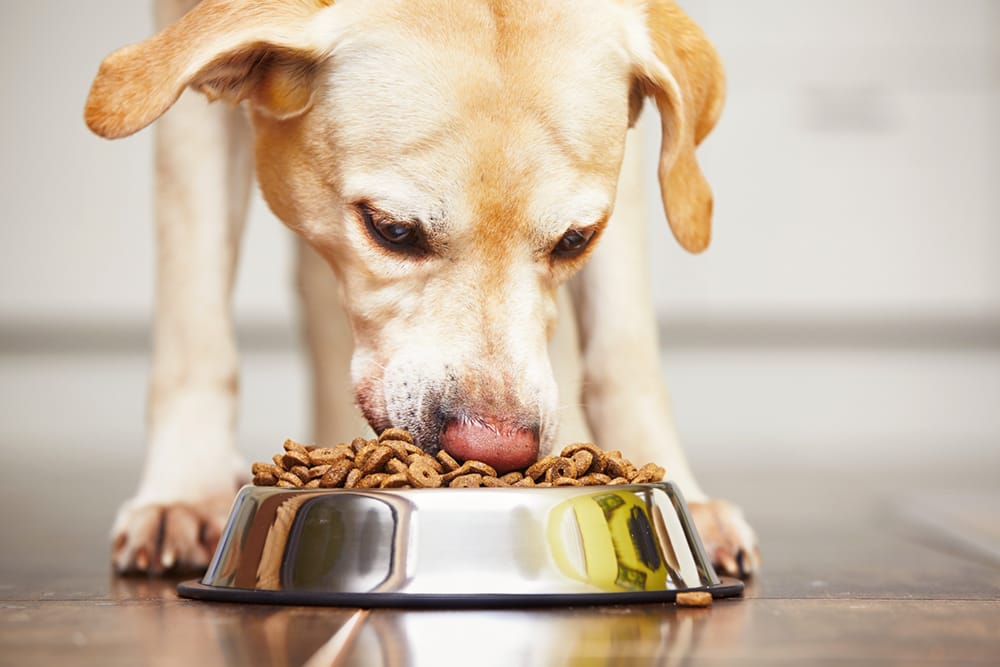
WEEK 3: ENRICHMENT AND EXERCISE
• Rotate sniff and seek games; add one new texture/surface walk for confidence.
• Two extra short aerobic sessions per week (age-appropriate).
WEEK 4: REVIEW AND DECIDE
• Compare the diary to the baseline.
• If anxiety remains high (e.g., separation, sound phobia), loop in your vet/behaviourist; consider a diet trial or medical work-up.
• For complex cases with GI and behaviour issues, discuss the suitability of advanced options (e.g., hydrolysed diets, referral; in rare cases, FMT research pathways).

Q: Which probiotic is best for anxiety?
A: There isn’t a universal winner. Effects are strain-specific, product quality varies, and many canine studies are small. Start with reputable, strain-named products, give them time (four to eight weeks), and monitor behaviour and then adjust with your vet’s guidance.
Q: Can I fix behaviour with diet alone?
A: Diet can lower the ‘noise floor’ by reducing gut-driven inflammation or discomfort, making behaviour therapy work better, but most anxiety issues still need behaviour modification and, in some cases, medication prescribed by your vet.
Q: Is FMT a cure?
A: No. It’s promising in specific research contexts (e.g., epilepsy with behavioural comorbidities) but not a mainstream cure-all. Proceed only under veterinary supervision.
KEY TAKEAWAYS
- The gut and brain are in constant conversation in dogs. Microbiome shifts correlate with anxiety and aggression, and targeted changes can influence behaviour in some settings.
- Build from fundamentals: balanced diet, healthy weight, prebiotic fibre, and consistent routines. Layer strain-specific probiotics judiciously and give them time.
- Manage stress proactively, because stress can jolt the gut, and a calmer gut can help produce a calmer mind.
- Advanced tools like FMT are exciting but remain specialist, research-led options.

Slow down
THE BENEFITS OF SLOW FEEDERS FOR DOGS
In recent years, slow feeders have moved from niche pet shop shelves to a common recommendation from veterinarians and behaviourists. These specially designed bowls and mats, often featuring ridges, mazes, or raised sections, encourage dogs to eat more slowly, and the benefits go far beyond just tidier mealtimes.
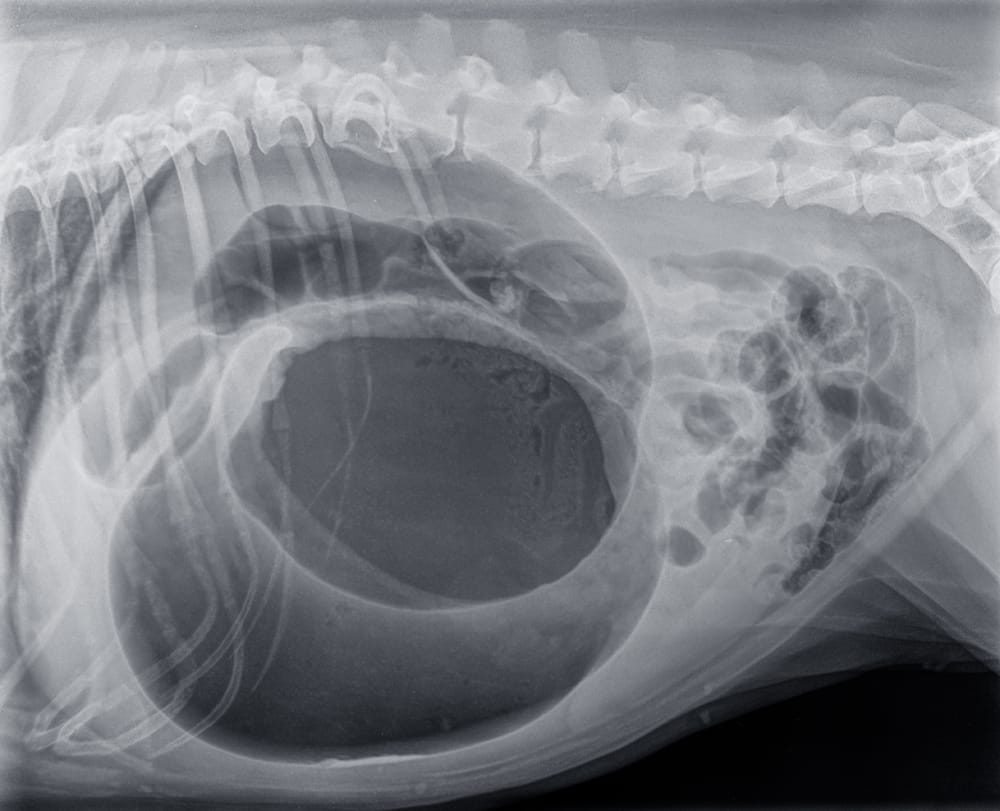
THE BENEFITS OF SLOW FEEDERS
1. Reducing the risk of bloat
One of the most serious health concerns linked to rapid eating is gastric dilatation-volvulus (GDV), or bloat. This is a life-threatening condition in dogs where the stomach fills with gas and can twist. Large and deep-chested breeds, such as Great Danes, Weimaraners, and Setters, are particularly at risk.
While bloat can occur for multiple reasons, eating too quickly is considered a contributing factor. By slowing a dog’s eating pace, slow feeders may help reduce the likelihood of excessive air swallowing (aerophagia) and the subsequent risk of GDV.
2. Supporting healthy digestion
Fast eaters often gulp down food without adequate chewing. This can lead to choking, gagging, or regurgitation shortly after meals. It also puts strain on the digestive system, as larger food particles require more work in the stomach and intestines.
A slower eating pace gives the stomach more time to signal satiety to the brain, potentially reducing the risk of overeating and associated gastrointestinal discomfort.

3. Weight management and satiety
Obesity is one of the most common health issues in domestic dogs. Slow feeders can play a role in weight control by prolonging mealtimes, which may help dogs feel full on less food. Research in both humans and animals shows that eating slowly can improve satiety signals, reducing the urge to overeat.

4. Mental stimulation and enrichment
For dogs, eating is more than a physical necessity; it’s an opportunity for mental engagement. Slow feeders turn mealtime into a problem-solving exercise, engaging natural foraging instincts.
For high-energy or easily bored dogs, this extra mental stimulation can help reduce undesirable behaviours such as destructive chewing or excessive barking that result from under-stimulation.
DID YOU KNOW?
From exuberant puppies who inhale every meal to senior dogs who benefit from more deliberate chewing, slow feeders are suitable for dogs at every life stage. They come in a variety of designs and difficulty levels, meaning they can be adapted to your dog’s size, breed, and ability.
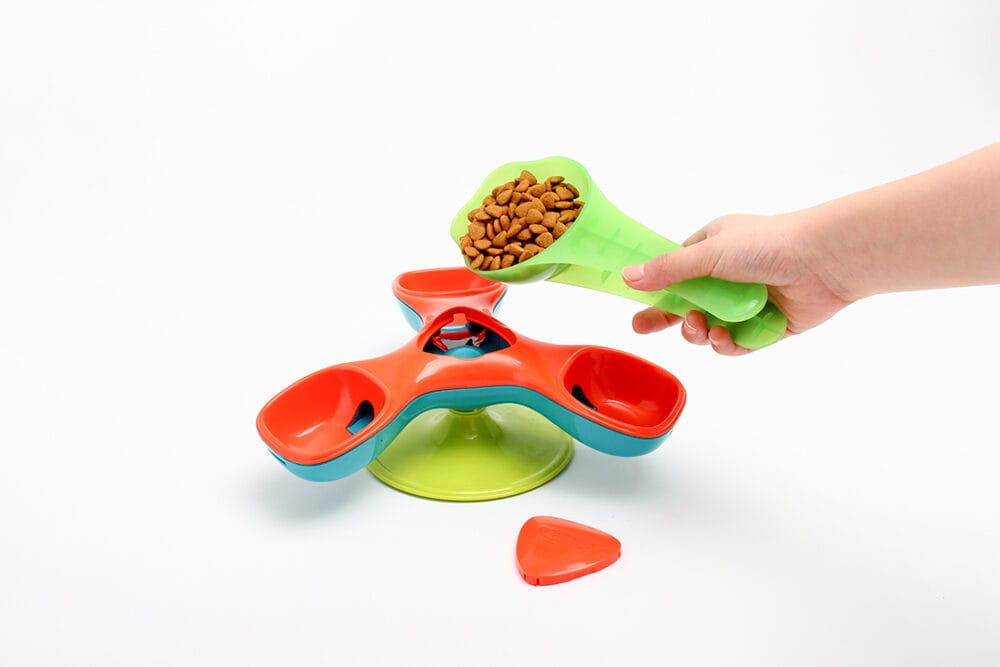
5. Improved nutrient absorption
Slower eating can aid in better digestion and nutrient uptake.
6. Reduced risk of choking
The physical barriers in slow feeders help prevent large mouthfuls and reduce the risk of choking or regurgitation after eating.
7. Positive routine addition
Slow feeders can help dogs learn to approach food more calmly, which can reduce food-related aggression in multi-dog households.
SIX SIGNS YOUR DOG EATS TOO FAST
- Gulping food without chewing
Your dog swallows large mouthfuls with little or no crunching. - Finishing meals in under a minute
A bowlful disappears almost instantly after it’s put down. - Coughing, gagging, or choking at mealtimes
Rapid eating increases the risk of airway blockage. - Vomiting or regurgitating soon after eating
Large, unchewed pieces are harder to digest. - Excessive burping or flatulence
Fast eating can cause your dog to swallow excess air. - Guarding the food bowl
Eating quickly may be a sign of resource guarding or anxiety around food.
If you notice one or more of these signs, a slow feeder could make mealtimes safer, calmer, and more enriching for your dog.

CHOOSING THE RIGHT SLOW FEEDER
When selecting a slow feeder, consider:
- Material: BPA-free plastic, stainless steel, or silicone.
- Ease of cleaning: Dishwasher-safe designs reduce bacterial build-up.
- Size and shape: Match the bowl to your dog’s muzzle size and feeding style.
- Difficulty level: Some dogs benefit from simple ridges, while others need more intricate mazes for an effective slowdown.
BOTTOM LINE
Slow feeders are a simple, relatively inexpensive tool that can improve digestion, reduce health risks, and enrich your dog’s daily life. For most dogs, the change in mealtime pace is worth the small investment, and the peace of mind it brings to us!
As always, if your dog has a history of digestive problems, choking, or weight fluctuations, consult your vet before making significant changes to their feeding routine.
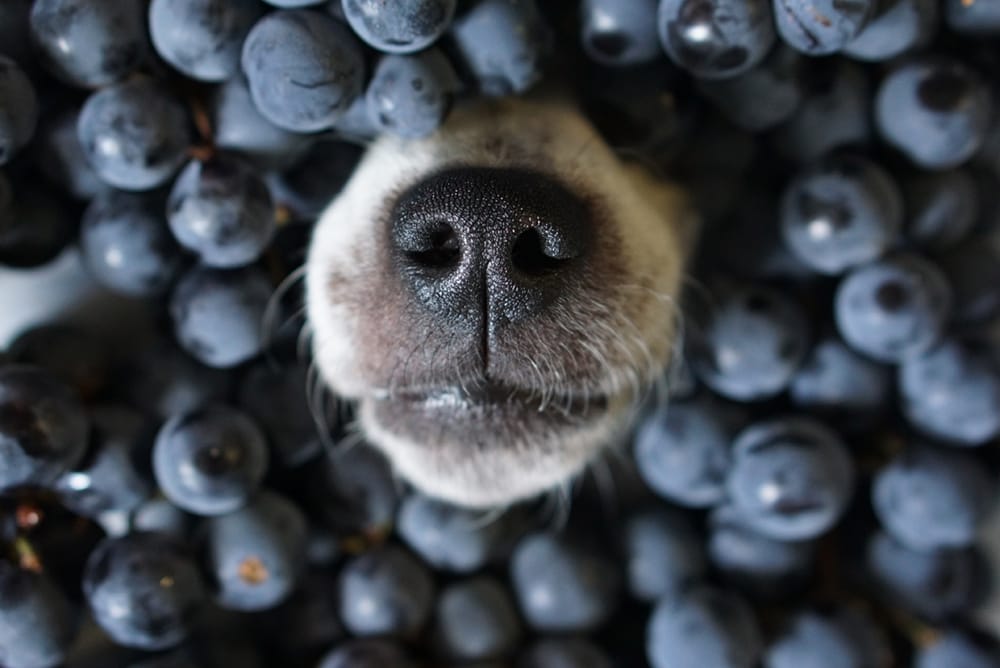
INTRIGUING INGREDIENTS
Blueberries
Small, sweet, and packed with nutrients, blueberries have earned their ‘superfood’ status in the human diet, but what about for our dogs? Are they truly beneficial, or is the hype more about trend than science? Let’s take a closer look.
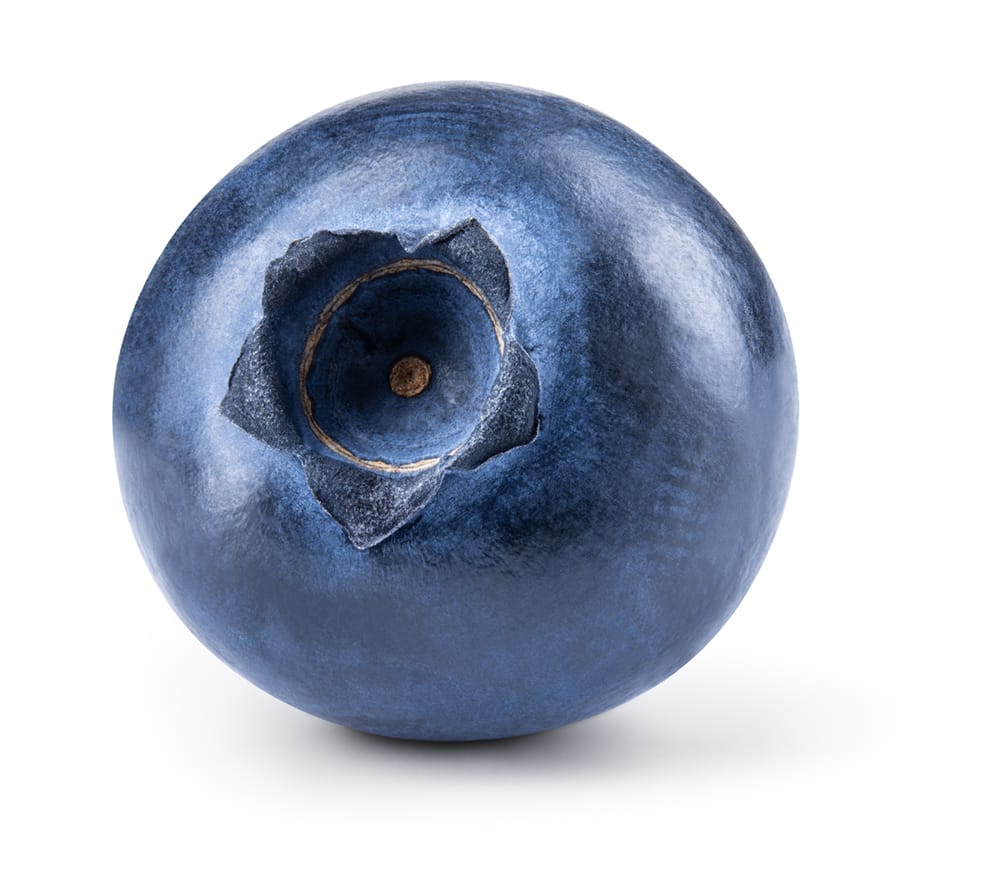
ANTIOXIDANT POWERHOUSES
Blueberries are rich in antioxidants, especially anthocyanins, which are the pigments responsible for their deep blue colour. Antioxidants help neutralise free radicals, unstable molecules that can damage cells and contribute to chronic diseases and ageing.
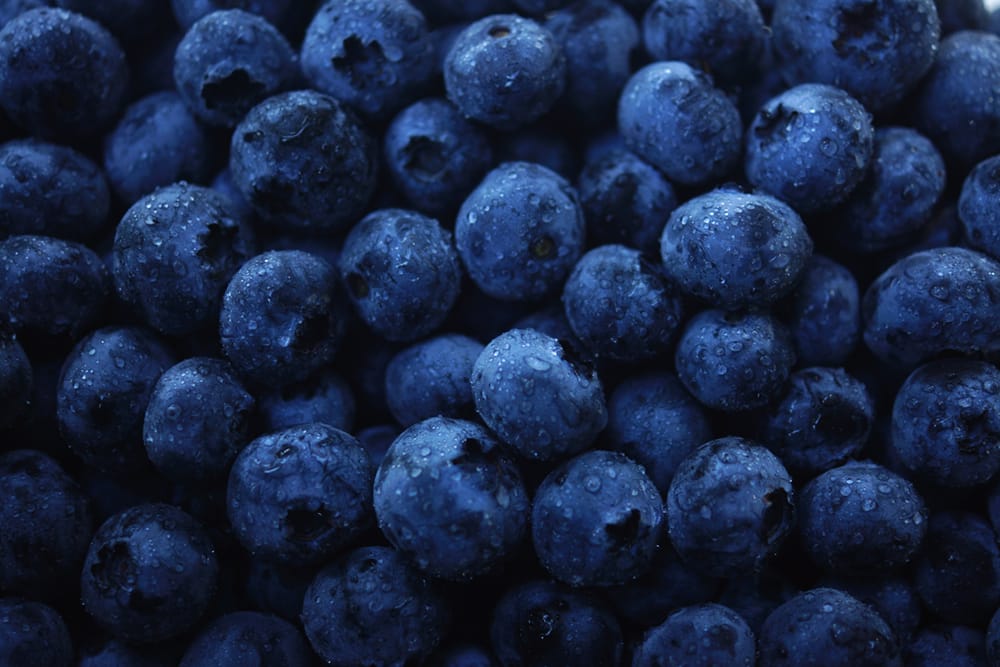
In dogs, oxidative stress has been linked to cognitive decline, inflammatory conditions, and joint degeneration. Research from the Journal of Animal Science (2012) found that older dogs fed an antioxidant-rich diet (including blueberries) showed improved cognitive function compared to a control group. Another study in Applied Animal Behaviour Science (2017) suggested that antioxidant supplementation may enhance learning and memory in senior dogs.
While the exact dose of antioxidants required for canine health is not yet firmly established, blueberries offer a natural, whole-food source that can be a useful addition to a balanced diet.
This isn’t about never doing necessary things – it’s about doing them with empathy, and teaching dogs how to participate willingly.

NUTRITIONAL PROFILE AND SUGAR CONTENT
Per 100 g, blueberries contain:
• Calories: ~57 kcal
• Carbohydrates: ~14 g (of which ~10 g are natural sugars)
• Fibre: ~2.4 g
• Vitamin C: ~9.7 mg
• Vitamin K: ~19.3 µg
• Manganese: ~0.3 mg
For most healthy dogs, this sugar content is minimal when blueberries are given in moderation. However, dogs with diabetes, obesity, or certain metabolic disorders should have their fruit intake carefully monitored. The fibre content is a plus, supporting healthy digestion, but overfeeding can cause loose stools.

TOP TIP
Serve fresh or frozen (dogs often love them as crunchy summer snacks).

SAFE FEEDING AMOUNTS
For healthy, active dogs, blueberries can be given as a treat or mixed into meals. As a guide:
- Small dogs (under 10 kg): Two to four blueberries, a few times per week
- Medium dogs (10–25 kg): Four to six blueberries
- Large dogs (25 kg+): Six to eight blueberries
TOP TIP
Avoid blueberries coated in sugar or included in sweetened baked goods.
These amounts help limit excess sugar while still providing antioxidants and fibre. Always introduce new foods gradually, and watch for signs of digestive upset or allergic reaction (rare, but possible).
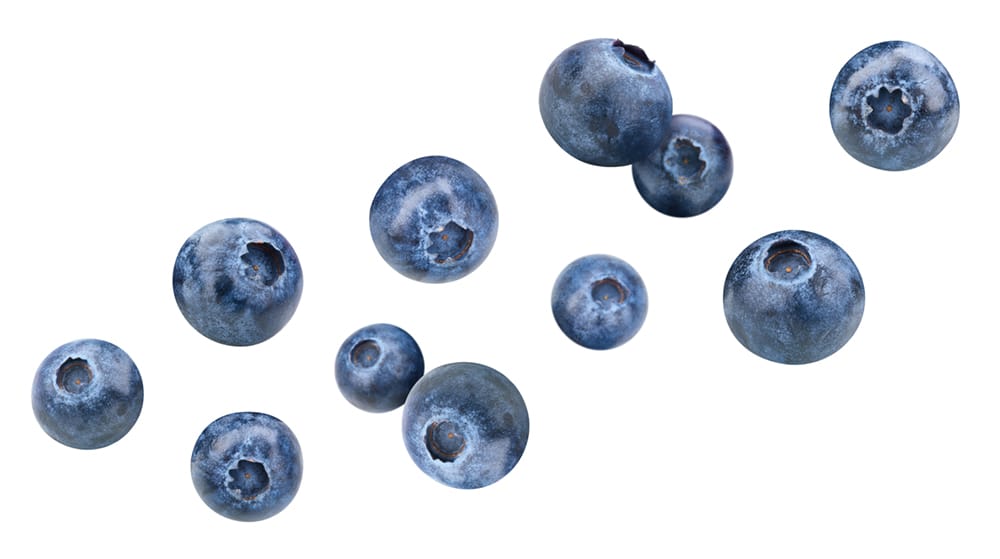
THE VERDICT
Blueberries aren’t a magic bullet, but they’re a safe, nutrient-dense addition to most dogs’ diets. Their antioxidants may help support cognitive function and overall health, especially in ageing dogs, while their low calorie density makes them a guilt-free treat option.
As with all treats, moderation is key, and they should complement, not replace, a balanced, complete canine diet.
References
1. Milgram, N.W., et al. (2005). Cognitive function in aged dogs: antioxidants, mitochondrial cofactors, and behavioural enrichment. Neurobiology of Ageing, 26(1), 77–90. 2. Pan, Y., et al. (2010). Dietary supplementation with antioxidants improves learning in aged dogs. Journal of Animal Science, 88(1), 172–179.
3. Zanghi, B.M., & Cupp, C.J. (2017). Dietary interventions for cognitive ageing in dogs. Applied Animal Behaviour Science, 189, 86–93.

YOUR DOG QUESTIONS ANSWERED
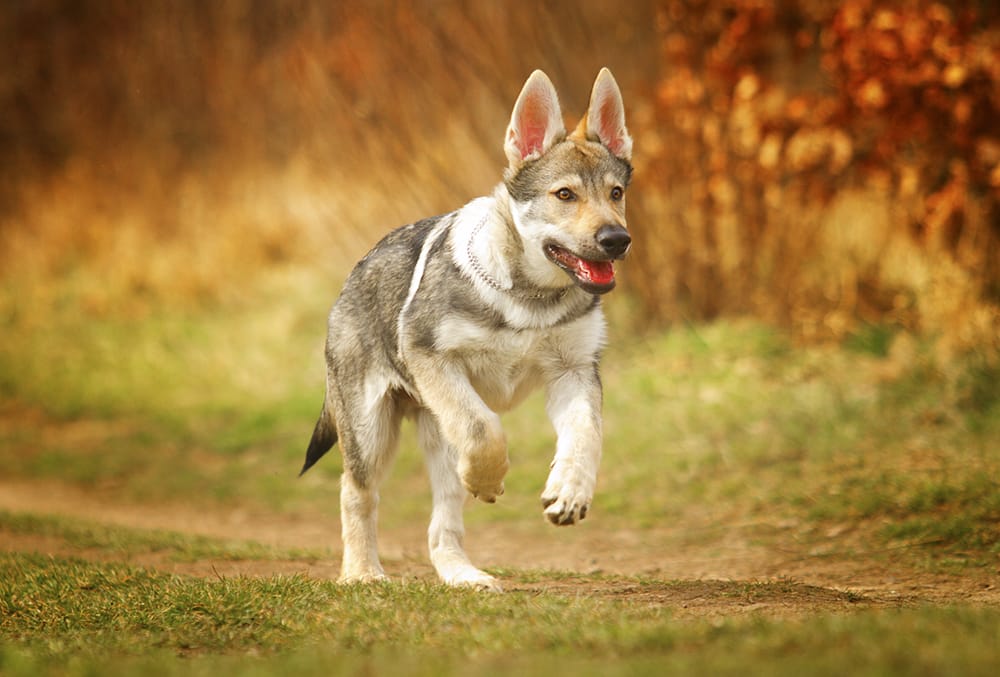

At what age do I need to start adding a joint supplement to my dog's diet? And what are the most important ingredients to look out for in a joint supplement?

The right time to introduce a joint supplement depends on your dog’s breed, size, lifestyle, and health history.
- Large and giant breeds (like German Shepherds, Labradors, and Great Danes) are more prone to joint issues such as hip and elbow dysplasia. For them, many vets recommend starting joint support as early as 12–18 months, once they’ve finished growing.
- Smaller breeds often don’t need supplements until they’re middle-aged or senior (around six to eight years old), unless there’s a known joint problem.
- Active dogs (e.g., agility, working, or sporting dogs) may also benefit from earlier support because of the extra wear and tear on their joints.

When choosing a joint supplement, check the label for these better-studied ingredients:
- Glucosamine: Supports cartilage repair and joint lubrication.
- Chondroitin sulphate: Helps slow cartilage breakdown.
- Omega-3 fatty acids (EPA/DHA): From fish oil or krill oil, proven to reduce inflammation.
- Green-lipped mussel: A natural source of omega-3s and other joint-protective compounds.
- MSM (Methylsulphonylmethane): An anti-inflammatory that may reduce pain and stiffness.
- Hyaluronic acid: Supports joint fluid and shock absorption.
NOTE: Not all supplements are created equal. Look for veterinary-formulated brands, ideally those with clinical trials or third-party testing. And remember: supplements work best as part of a holistic joint-care plan, which includes a healthy weight, regular low-impact exercise, and good nutrition.
Finally, don’t forget to always chat with your vet before starting a supplement, especially if your dog already has joint issues or other medical conditions.


My dog goes wild when the doorbell rings. What can I do to help him cope better?

You’re not alone. This is one of the most common behaviour questions vets and trainers get! Dogs bark or rush around when the bell rings because it’s a sudden noise, it predicts visitors, and for some dogs it’s exciting, while for others it feels threatening. The good news? With some training and management, you can help your dog stay calmer.
TOP TIP
If your dog’s reaction feels extreme (lunging, growling, or can’t settle after visitors arrive), reach out to a qualified positive reinforcement trainer or veterinary behaviourist. Sometimes professional help makes all the difference.
Step 1: Change the association
Right now, your dog hears the doorbell and thinks ‘Intruder!’ or ‘Playtime!’ Instead, you want him to learn that the bell means something calm and positive is happening.
- Start by ringing the bell (or asking someone to do it) and immediately toss your dog a treat on the floor away from the door.
- Repeat until the sound of the bell makes him look to you for a snack, not charge at the door.
Step 2: Teach an alternative behaviour
Give your dog a ‘job’ when the bell rings. For example:
- Train a ‘go to your bed’ cue using rewards. Practice until it’s automatic.
- When the bell rings, cue him to go to his bed, and reward him for staying there while you answer the door.
- Start with very short durations and gradually increase.
Step 3: Manage the situation
Training takes time. In the meantime:
- Use a baby gate or a lead to keep your dog away from the front door.
- Put up a note asking visitors to text instead of ringing the bell if your dog is very stressed.
- Play calming background music to make sudden noises less startling.
With consistency, your dog can learn that the doorbell isn’t a big deal, and you’ll finally be able to greet guests without chaos!
Products we love
Shopping fun
PaleoPet Pure 100% Green Beef Tripe for Dogs
Humans may find tripe to be somewhat of an acquired taste (and smell), but dogs absolutely love it! Our tripe has been thoroughly washed and cleaned for you, while retaining all the nutrition of unbleached tripe. It’s easy to serve and store and has so many health benefits for adult and senior dogs especially.
Tripe is rich in trace minerals, while moderate in protein and fat. It is a great complementary raw food addition to a diet for dogs who may struggle with constipation or need foods that are easier to digest. Tripe doesn’t contain any bone, but still maintains a perfect calcium phosphorus balance, which is rare for animal protein without bone content.
Tripe can be used as a basis for a ketogenic diet for dogs with cancer or epilepsy where one should feed low to no carbohydrate, moderate protein, and high fat. Tripe can also entice dogs who may not feel all that well and are reticent to eat.
Our 100% Green Beef Tripe (and nothing else) is made from the best quality local beef with no preservatives, colourants, or artificial flavourants.
The PaleoPet Pure range is FSA Food Safety certified and DALRRD registered. Also available in convenient, pre-frozen 1.5 Kg and 750g tubs or as a box of 12 individually wrapped 100g Patties. The tubs are re-usable, recyclable, and PBA-free.
Products can be purchased online at www.paleopetpure.com and delivered to your door or bought at selected retailers.
follow us on Instagram @dogquarterlymag and Facebook dqmagazine
stay tuned for the next issue of


